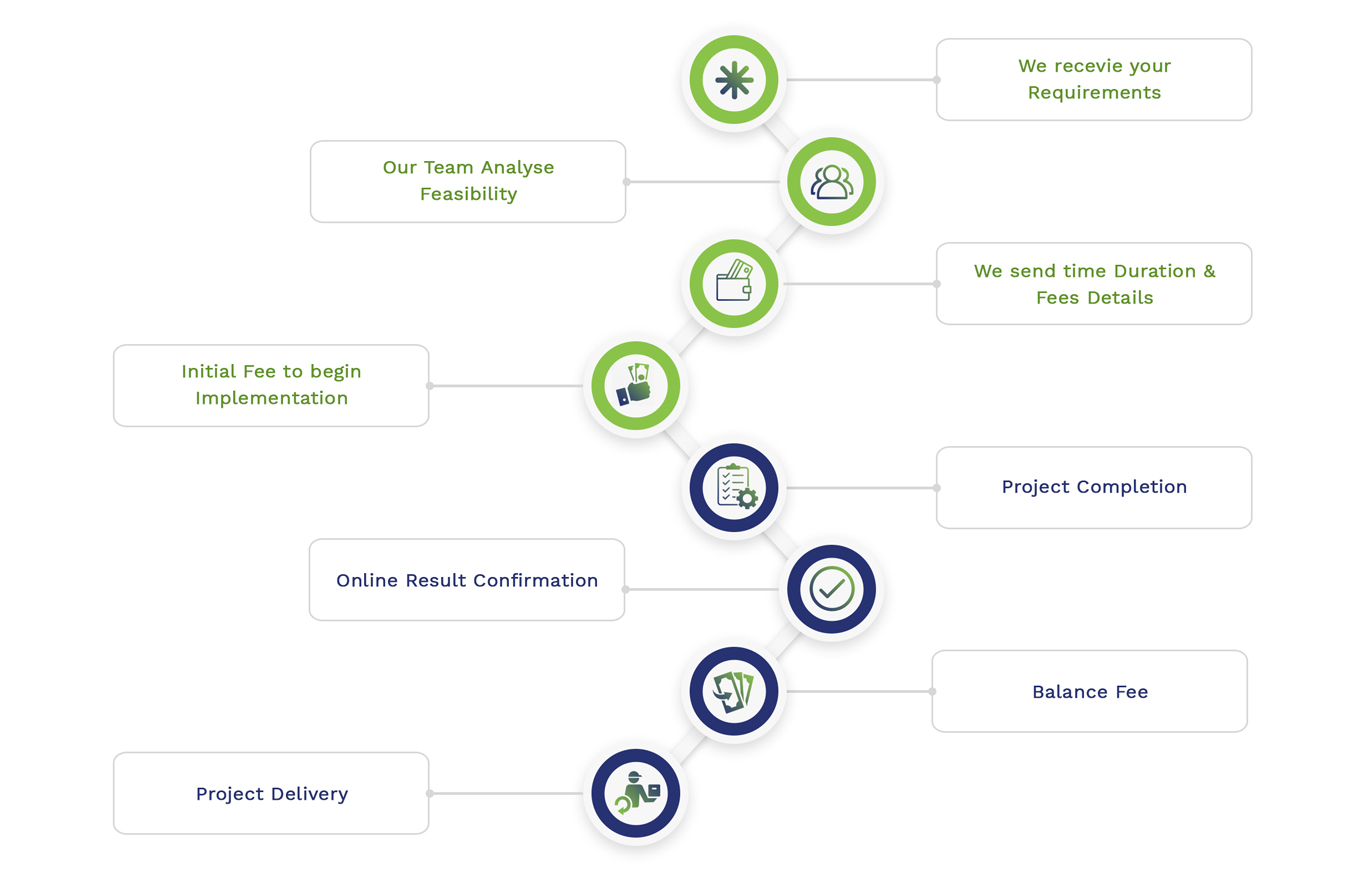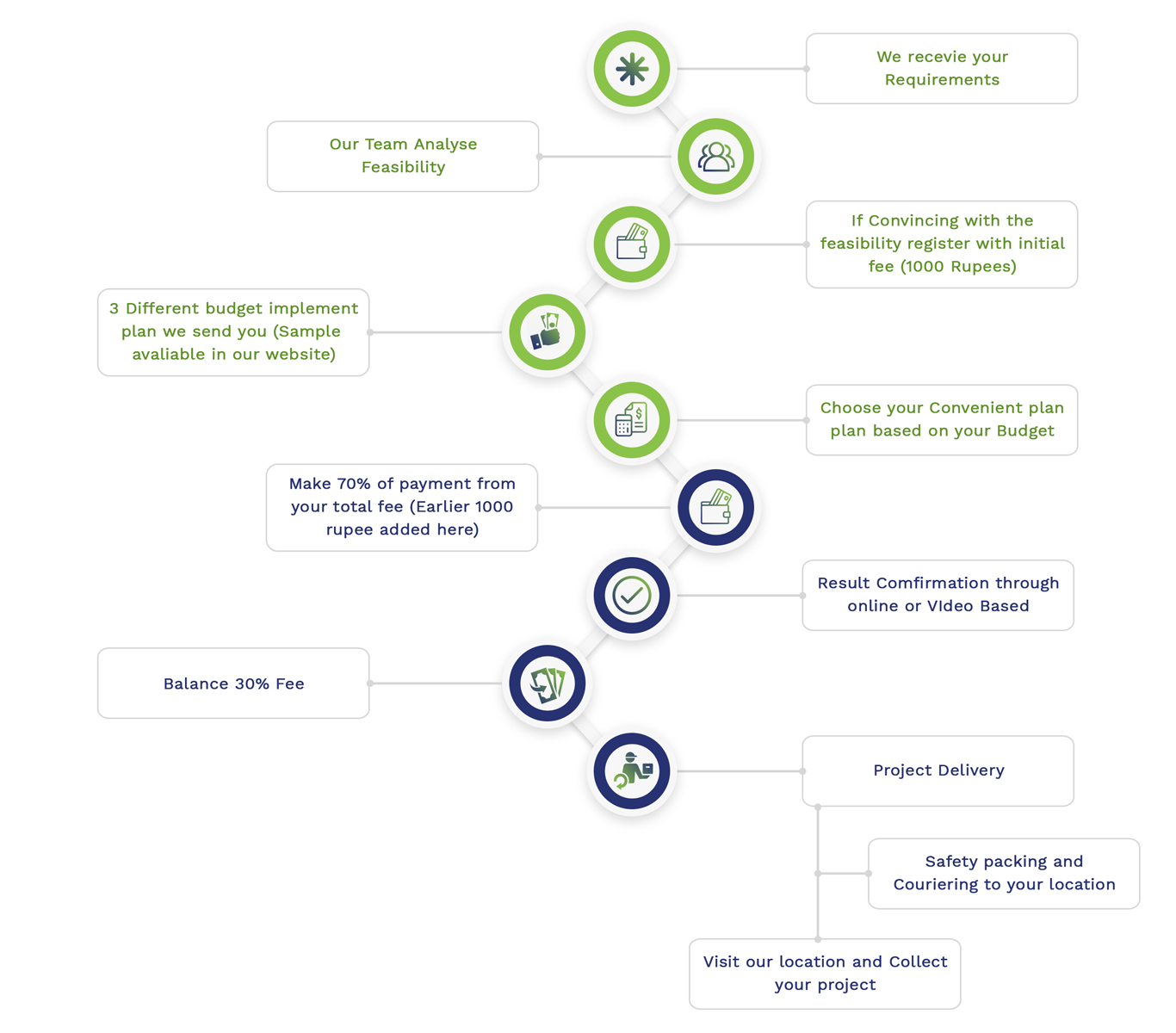OPNET is examined as a most appropriate network simulator for a vast array of project plans and research topics because of its practical simulation platform and broader functionalities. We specialize in creating captivating Opnet Projects that are built upon a fascinating concept. Our dedicated development team is committed to conducting various types of scientific and experimental research-oriented Opnet Projects. We take pride in delivering customized work based on your specific requirements. So, why wait? Let our experts help you complete your project successfully. By considering simulation analysis, we suggest numerous compelling OPNET-based project topics and plans:
- 5G Network Performance Evaluation
- Explanation: In terms of different contexts like dense, rural, and urban platforms, 5G network placements have to be simulated for examining various performance indicators, including ability, latency, and throughput.
- Aim: With the aim of assuring high-standard service among various applications and areas, detect enhancement policies for the placement and functioning of a 5G network.
- Comparative Analysis of Routing Protocols in MANETs
- Explanation: Consider the simulation of Mobile Ad-hoc Networks (MANETs). On the basis of various network conditions and mobility formats, compare the routing protocol’s efficiency, such as OLSR, DSR, and AODV. These can be achieved with the help of OPNET.
- Aim: By examining aspects like end-to-end delay, packet delivery ratio, and energy utilization, the highly effective routing protocol has to be decided for particular MANET-based use cases.
- IoT Network Scalability and Performance
- Explanation: As the count of devices increases in the Internet of Things (IoT) network, assess the credibility, performance, and scalability by designing an IoT network in OPNET. Some various interaction frameworks and protocols like CoAP and MQTT must be analyzed.
- Aim: For extending IoT networks in addition to preserving credibility and performance, find potential issues and countermeasures.
- SDN Network Efficiency and Security
- Explanation: To evaluate the safety characteristics and effectiveness of Software-Defined Networking (SDN) framework, simulate it. The effect of SDN on performance enhancement, protection from cyber hazards, and network handling could be the major considerations of the projects.
- Aim: Investigate in what way network adaptability, safety, and performance can be improved by SDN.
- Network Function Virtualization (NFV) Impact Analysis
- Explanation: On the cost-effectiveness and performance of network services, examine the effect of Network Function Virtualization (NFV). Across the NFV framework, the placement of virtualized network functions (VNFs) and their management must be simulated.
- Aim: In service provider networks, the advantages and possible disadvantages of NFV applications have to be assessed.
- Quality of Service (QoS) in Multimedia Networks
- Explanation: In multimedia services like video streaming and VoIP that are facilitated with networks, explore QoS techniques.
- Aim: As a means to enhance user experience in the applications of multimedia, strengthen QoS contexts.
- Energy Consumption in Wireless Sensor Networks (WSNs)
- Explanation: To analyze the energy utilization of sensor nodes in accordance with various data transmission policies and routing methods, design a wireless sensor network in OPNET.
- Aim: With the intention of expanding the endurance of the network in WSNs while preserving data suitability or preciseness, create energy-effective operation tactics.
- Cybersecurity Threats and Mitigation in Enterprise Networks
- Explanation: Across an enterprise network, simulate cybersecurity hazards such as malware distribution and DDoS assaults by utilizing OPNET. Then, the efficiency of different safety appliances and reduction policies has to be assessed.
- Aim: With the help of efficient hazard identification and response tactics, improve the safety of the enterprise network.
- Performance of Cloud Computing Environments
- Explanation: To examine the cloud services’ scalability and performance, the platforms of cloud computing must be simulated through the use of OPNET. It is significant to focus on different arguments like network latency, load balancing, and virtual machine (VM) allotment.
- Aim: For enhancing services and resources of cloud computing, find effective approaches.
- Vehicular Ad-Hoc Networks (VANETs) for Smart Cities
- Explanation: In order to investigate traffic management policies and interaction protocols for the applications of smart city, design VANETs in OPNET. This project specifically considers distribution of information, protection, and traffic effectiveness.
- Aim: By employing the latest VANET applications and mechanisms, enhance urban security and mobility.
How to model a 5G network on an OPNET modeller?
The designing of 5G in an in-depth manner may need the usage of any accessible 5G extensions or libraries or the creation of a model in a conventional way because of the exclusive basis of OPNET Modeler.
To initiate the process of designing a 5G network in OPNET Modeler, we provide a common procedural flow in an explicit way:
- Interpret the 5G Architecture
Initially, you should be aware of 5G networks based on their major frameworks and aspects that encompasses:
- gNodeB (gNB): It is the alternative of LTE’s eNodeB and considered as the base station in 5G networks.
- 5G Core Network (5GC): It includes some important factors like User Plane Function (UPF), Session Management Function (SMF), and Access and Mobility Management Function (AMF).
- Network Slicing: It particularly enables the several virtual networks development on the exact physical hardware and also referred to as a significant characteristic of 5G.
- mmWave Communications: For extensive data rate transmission, the potential of millimeter-wave frequencies in 5G is effective.
- Set Up the Simulation Platform
- Develop a New Project: In OPNET modeler, develop a novel project first. For the simulation of your 5G network, choose a suitable work environment.
- Specify the Simulation Area: The network structure or the geographical region has to be defined. By impacting the coverage and gNBs density, examine rural, urban, or suburban contexts for a 5G network.
- Configure the 5G Network Aspects
- Add and Configure gNBs: In your simulation platform, deploy gNB nodes. At the beginning, you can use LTE eNodeBs and alter their arguments for indicating the functionalities of 5G like lesser latency and greater throughput, specifically in the case of not having clear 5G gNB models in OPNET based on your version.
- Model the 5G Core Network: To simulate the aspects of the 5G core network, there might be a requirement to customize or alter previous models in terms of the version of OPNET modeler and the essential content level.
- Implement Network Slicing: Various virtual network slices such as mMTC, eMBB, and URLLC have to be specified based on their particular performance necessities, only if your simulation needs network slicing.
- Specify End User Devices
- Add User Equipment (UE): Within the simulation, deploy UE models that will interact through the network of 5G. To align with the anticipated performance range of 5G such as less-latency interaction and extensive-speed data rates, alter the abilities of UE models.
- Configure Mobility Patterns: Specify the mobility patterns of the mobile users if your simulation includes them. This specification is for simulating the actual-world progress and its effect on the network in a precise manner.
- Set Up Traffic and Applications
- Specify Applications and Services: To examine in what way various kinds of traffic is managed by 5G network, set up the different varieties of applications like actual-time gaming, IoT data gathering, and streaming video that are executing through the network.
- Configure Traffic Loads: For analyzing in what way the network functions according to diverse states, simulate various use cases ranging from minimal to high traffic by adapting the traffic density.
- Customize Protocols and Technologies
- Adjust Protocol Arguments: Specifically when utilizing improved or novel protocols in 5G, the arguments of wireless protocols have to be adjusted to match with the principles of 5G.
- Simulate mmWave Communications: To utilize mmWave frequencies, arrange the simulation and evaluate their effect on the coverage and performance of the network. This is especially when the version of your OPNET aids it.
- Execute Simulations and Analyze Outcomes
- Simulation Scenarios: On the basis of different states, test the performance of the network by executing several simulations with diverse arrangements.
- Analyze Data: To assess the key performance indicators (KPIs) like user mobility effects on the network performance, latency, throughput, and packet loss, employ the analysis tools of OPNET modeler.
- Iterate and Refine
- Improvement: For indicating the expected 5G contexts and goals in a more precise way, improve your simulation arguments and models in terms of the preliminary outcomes.

Opnet Project Topics & Ideas
Have a look at the current Opnet Project Topics & Ideas that we aided for scholars, we are waiting to guide you. Just drop one message and enjoy our elite services.
- Effective link interference model in topology control of wireless Ad hoc and sensor networks
- DREAM: A system for detection and reaction against MAC layer misbehavior in ad hoc networks
- PAACP: A portable privacy-preserving authentication and access control protocol in vehicular ad hoc networks
- A location prediction based routing protocol and its extensions for multicast and multi-path routing in mobile ad hoc networks
- Novel store–carry–forward scheme for message dissemination in vehicular ad-hoc networks
- A Novel Selective Encryption Method for Securing Text Over Mobile Ad Hoc Network
- Cache invalidation strategies for internet-based mobile ad hoc networks
- OLSR vs DSR: A comparative analysis of proactive and reactive mechanisms from an energetic point of view in wireless ad hoc networks
- A distributed multichannel MAC protocol for rendezvous establishment in cognitive radio ad hoc networks
- Multivariate Control Chart for the Detection of MAC Layer Misbehavior in Mobile ad Hoc Networks
- Enhanced certificate revocation scheme with justification facility in mobile ad-hoc networks
- An improvement in performance of mobile ad hoc networks using modified route maintenance
- Impact of trust model on on-demand multi-path routing in mobile ad hoc networks
- Impact of human mobility on wireless ad hoc networking in entertainment parks
- HPDM: A Hybrid Pseudonym Distribution Method for Vehicular Ad-hoc Networks
- A Dynamic Congestion Control Scheme for safety applications in vehicular ad hoc networks
- Real experimentation of probabilistic broadcasting algorithms based on dissimilarity metrics for multi-hop ad hoc networks
- Topology control for minimizing interference with delay constraints in an ad hoc network
- Influence of mobility models on the performance of data dissemination and routing in wireless mobile ad hoc networks
- HPDM: A Hybrid Pseudonym Distribution Method for Vehicular Ad-hoc Networks
Subscribe Our Youtube Channel
You can Watch all Subjects Matlab & Simulink latest Innovative Project Results
Our services
We want to support Uncompromise Matlab service for all your Requirements Our Reseachers and Technical team keep update the technology for all subjects ,We assure We Meet out Your Needs.
Our Services
- Matlab Research Paper Help
- Matlab assignment help
- Matlab Project Help
- Matlab Homework Help
- Simulink assignment help
- Simulink Project Help
- Simulink Homework Help
- Matlab Research Paper Help
- NS3 Research Paper Help
- Omnet++ Research Paper Help
Our Benefits
- Customised Matlab Assignments
- Global Assignment Knowledge
- Best Assignment Writers
- Certified Matlab Trainers
- Experienced Matlab Developers
- Over 400k+ Satisfied Students
- Ontime support
- Best Price Guarantee
- Plagiarism Free Work
- Correct Citations
Expert Matlab services just 1-click

Delivery Materials
Unlimited support we offer you
For better understanding purpose we provide following Materials for all Kind of Research & Assignment & Homework service.
 Programs
Programs Designs
Designs Simulations
Simulations Results
Results Graphs
Graphs Result snapshot
Result snapshot Video Tutorial
Video Tutorial Instructions Profile
Instructions Profile  Sofware Install Guide
Sofware Install Guide Execution Guidance
Execution Guidance  Explanations
Explanations Implement Plan
Implement Plan
Matlab Projects
Matlab projects innovators has laid our steps in all dimension related to math works.Our concern support matlab projects for more than 10 years.Many Research scholars are benefited by our matlab projects service.We are trusted institution who supplies matlab projects for many universities and colleges.
Reasons to choose Matlab Projects .org???
Our Service are widely utilized by Research centers.More than 5000+ Projects & Thesis has been provided by us to Students & Research Scholars. All current mathworks software versions are being updated by us.
Our concern has provided the required solution for all the above mention technical problems required by clients with best Customer Support.
- Novel Idea
- Ontime Delivery
- Best Prices
- Unique Work
Simulation Projects Workflow

Embedded Projects Workflow



 Matlab
Matlab Simulink
Simulink NS3
NS3 OMNET++
OMNET++ COOJA
COOJA CONTIKI OS
CONTIKI OS NS2
NS2






